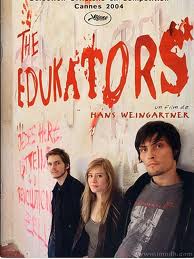
Does ‘Syd Field’ have anything do with the success of Pokiri, a recent Tollywood blockbuster ?
Obviously not.
But, it does make an interesting comparison, if we overlap Syd Field’s theory to this film and analyse the structure of the film.
Let’s get a quick recap of Syd Field’s theory–the ideal “three act structure”. In this structure, a film must begin with less than half an hour of ‘setup’ information before the protagonist experiences a ‘turning point’ that gives them a goal that must be achieved. Approximately half the movie’s running time must then be taken up with the protagonist struggling to achieve his/her goal: this is the ‘Confrontation’ period. Field also refers sometimes to the ‘Mid Point’, a more subtle turning point that should happen in the middle (approx. at page 60 of a written screenplay) of the Confrontation, and is often an apparently devastating reversal of fortune. The final quarter of the film then depicts a climactic struggle to finally achieve the goal(or not achieve the gold), and the aftermath of that struggle.
Pokiri tells the story of a street-side rowdy, and his exploits with a land mafia and a beautiful girl. He is a go-getter, comes up with the great punchlines for every situation and can handle guns and roses with the elan of a-James-Bond-gone-street way.
And just when you thought he is beyond redemption, he mends his ways, races towards new found mission, and finishes off the bad guys in style.
Let’s get to the structure now. The movie kicks off with the hero cum protagonist enjoying killing spree, improvising and honing his art of killing at every step. Hence the set up as per Mr.Field leads to an-aggressive-rookie-to-a-mafia-Don-in-the-making. A couple of thrilling encounters are thrown in to prove this point. Just when you settle for the next big tussle with the rival gang, his love interest, the svelte, yet middle-class heroine, makes an entry.
Hmm…we got give it to the hero. What’s life without love? So, this got to be the ‘turning point’. Let’s change the setup as well(the half-hour rule is gone out of the window,anyway) and call it the man-with-guns-coming-to-terms-with-feelings-in-heart kind. So, the hero’s goal ought to be the girl now.
He chases his girl-goal, engages in couple more thrilling duels even with his own gang. It appears as if he is ‘struggling’ to come to terms with his love for the girl. Good…the time gaps aren’t exactly the same, but it is still Mr.Field’s structure.
He even start showing his good side. It appears that the heroine has managed to cast her spell on the wayward hero.
Then hero gets on to meet the Don…hmm..is the hero shifting his goal? Will he go multi-national and pitch for the coveted seat?
Just when you are thoroughly confused, Mr.Field’s ala Mid point comes, not just as an obstacle in achieving his goal and doing a lot more. It reveals the true identity of the hero and gives him a new mission altogether, as if rewinding the structure again. Interestingly, the hero wins over his girl by this time, yet, he is out to accomplish something else. You could still call it ‘reversal of fortunes’, but…
In the end, what Pokiri manages is a real feat…because the entire film hinges on the last one third/fourth of duration of the film. And even if you did not see it through Syd Field’s eyes you would still have noticed it. His lens just makes it for a stark realization.
Now, Let’s leave Mr.Field alone for some time.
So, why did the story click?
It did…may be because for not even once, did the story teller stray away from the strong hero-characaterization. His walk and talk…his assured manners, his secretive nature etc. stays intact. He runs, he kills and he talks in the same way, even when he shifts to the other side of the law. Hence, he remains connected with the audience. Here is where the story teller–Puri Jagan–scores.
And when you have an extremely popular and charismatic actor like Mahesh donnes the role, it sure does result in a huge success as Pokiri did.
Related links
Wikipedia
Official site of Syd Field
Puri Jagan’s site
Movie Review

 According to a conservative estimate, the introduction fight of Van Damme in ‘Hard Target’ has influenced more than a hundred fight sequences, in the south Indian cinema!
According to a conservative estimate, the introduction fight of Van Damme in ‘Hard Target’ has influenced more than a hundred fight sequences, in the south Indian cinema!

